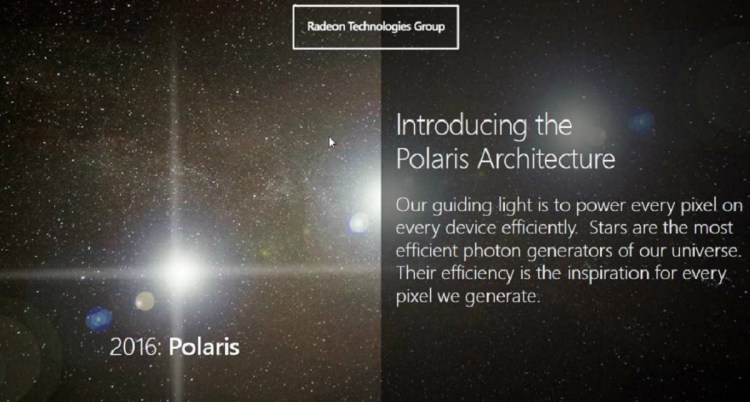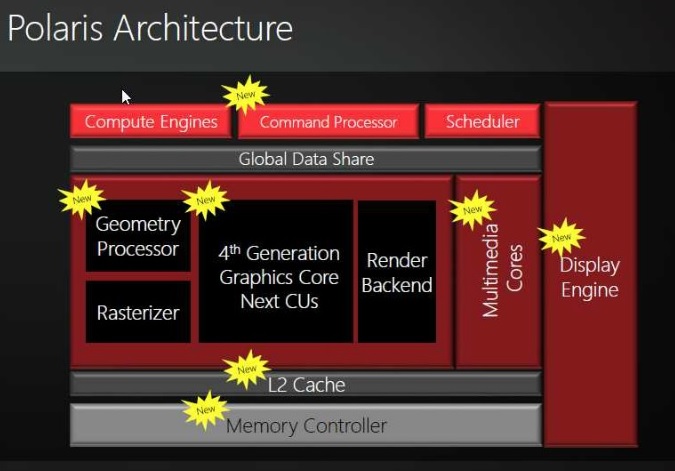Advanced Micro Devices is rebranding its graphics chips under the new AMD Polaris brand.
Rather than build its branding around graphics cards, or the circuit boards that house the graphics chips, AMD’s Radeon Technologies Group will now build a brand around the specific architecture of the graphics chip design. The occasion for the change is a new set of technologies that represent the biggest change in AMD’s graphics technology in the last five years, and that change will lead to much more powerful and power-efficient laptops and devices.
Polaris, named after the brightest star in the sky, is the brand name for a new graphics processing unit (GPU) architecture. That chip will have advanced features (AMD’s Graphics Core Next, HDMI 2.0a, DisplayPort 1.3, and 4K h.265 encode/decode) as well as a new manufacturing process dubbed FinFET, which enables a new kind of transistor, or basic building block, to be built on top of a chip. The FinFET design (in contrast to Intel’s Tri-gate transistor) tries to maximize power efficiency.
AMD’s Radeon Technologies Group (which was recently created for AMD’s graphics business) believes that this new technology will differentiate its chips and deserves its own brand name, said Adam Kozak, the AMD product marketing manager, in a press briefing.
“It’s a collection of a whole bunch of intellectual property,” Kozak said. “Going forward for 2016, our products will be based on the Polaris architecture. It’s going to be a lot more efficient.”
The new chips using Polaris architecture will make a “historic leap in performance per watt,” Kozak said.
“FinFET is a big inflection point,” Kozak said. “It’s been about five years since we’ve had a different process. FinFET will be our process of choice for 2016.”
FinFET will drive AMD’s adoption of 16-nanometer processes, where the width between circuits is just 16 billionths of a meter wide.
“This enables a new kind of product in thin-and-light gaming notebooks and small-form factor desktops,” Kozak said.
You’ll be able to run a game like Star Wars: Battlefront on a PC with 1920 x 1080 (high-definition) resolution and 60 frames per second — and still consume only 86 watts of power. That’s significantly less than the 140-watt graphics cards currently on the market, Kozak said. The chips with the Polaris architecture are expected to start arriving in mid-2016.
VentureBeat's mission is to be a digital town square for technical decision-makers to gain knowledge about transformative enterprise technology and transact. Learn More


